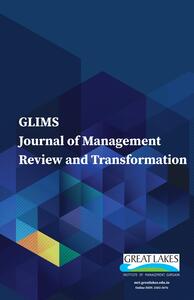
1Indian Institute of Management Bangalore, Bilekahalli, Bengaluru, Karnataka, India
Creative Commons Non Commercial CC BY-NC: This article is distributed under the terms of the Creative Commons Attribution-NonCommercial 4.0 License (http://www.creativecommons.org/licenses/by-nc/4.0/) which permits non-Commercial use, reproduction and distribution of the work without further permission provided the original work is attributed.
Disability inclusion is increasingly becoming popular among many companies, both in small-scale and large MNCs, as a strategy for competitive advantage in recent years. However, researchers previously have identified a lack of attention to this area in the field of research. Consequently, with the phenomenon not being explored extensively, companies trying to form disability inclusion initiatives have been observed to lack sensitivity to the phenomenon on various levels. To bridge this gap, the present study attempts to understand the concept of disability identity, ableism, and its influence on the perceived inclusion of a differently abled employee within an organisation under different circumstances. Three propositions have been arrived at in this conceptual paper, which indicates the complexity associated with the concept of disability identity, which is eventually supposed to drive disability inclusion initiatives for a given organisation. Implications and future directions indicate the need for more quantitative studies in the area to provide data evidence as empirical support.
Disability inclusion, disability identity, ableism, perceived inclusion, diversity, work identity
Ashforth, B. E., & Mael, F. (1989). Social identity theory and the organization. Academy of Management Review, 14(1), 20–39.
Bruyere, S. M., Erickson, W. A., & Ferrentino, J. T. (2003). Identity and disability in the workplace. William and Mary Law Review, 44(3), 1173–1196.
Chen, C., & Tang, N. (2018). Does perceived inclusion matter in the workplace? Journal of Managerial Psychology, 33(1), 43–57. https://doi.org/10.1108/JMP-02-2017-0078
Jammaers, E., Zanoni, P., & Hardonk, S. (2016). Constructing positive identities in ableist workplaces: Disabled employees’ discursive practices engaging with the discourse of lower productivity. Human Relations, 69(6), 1365–1386.
Kalargyrou, V. (2014). Gaining a competitive advantage with disability inclusion initiatives. Journal of Human Resources in Hospitality & Tourism, 13(2), 120–145.
Lindsay, S., Cagliostro, E., Albarico, M., Mortaji, N., & Karon, L. (2018). A systematic review of the benefits of hiring people with disabilities. Journal of Occupational Rehabilitation, 28(4), 634–655.
Miethlich, B., & Oldenburg, A. G. (2019). Employment of persons with disabilities as competitive advantage: An analysis of the competitive implications. In 33rd International Business Information Management Association Conference (IBIMA), Education Excellence and Innovation Management through Vision 2020, Granada, Spain, 10–11.04. 2019 (pp. 7146–7158). IBIMA Publishing.
Santuzzi, A. M., & Waltz, P. R. (2016). Disability in the workplace: A unique and variable identity. Journal of Management, 42(5), 1111–1135.
Stone, D. L., & Colella, A. (1996). A model of factors affecting the treatment of disabled individuals in organizations. Academy of Management Review, 21(2), 352–401.
Randel, A. E., Chay-Hoon, L., & Earley, P. C. (2005). It’s not just about differences: An integration of role identity theory and status characteristics theory. In Status and groups (Vol 7). Emerald Group Publishing Limited.
Riach, K., & Loretto, W. (2009). Identity work and the unemployed worker: Age, disability and the lived experience of the older unemployed. Work, Employment and Society, 23(1), 102–119.